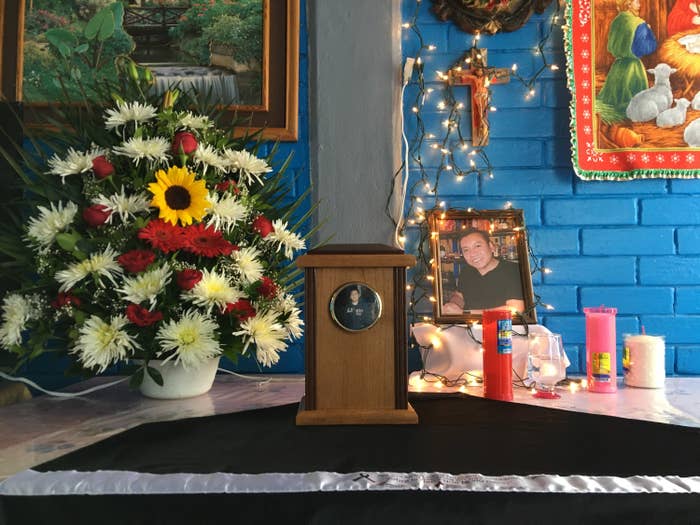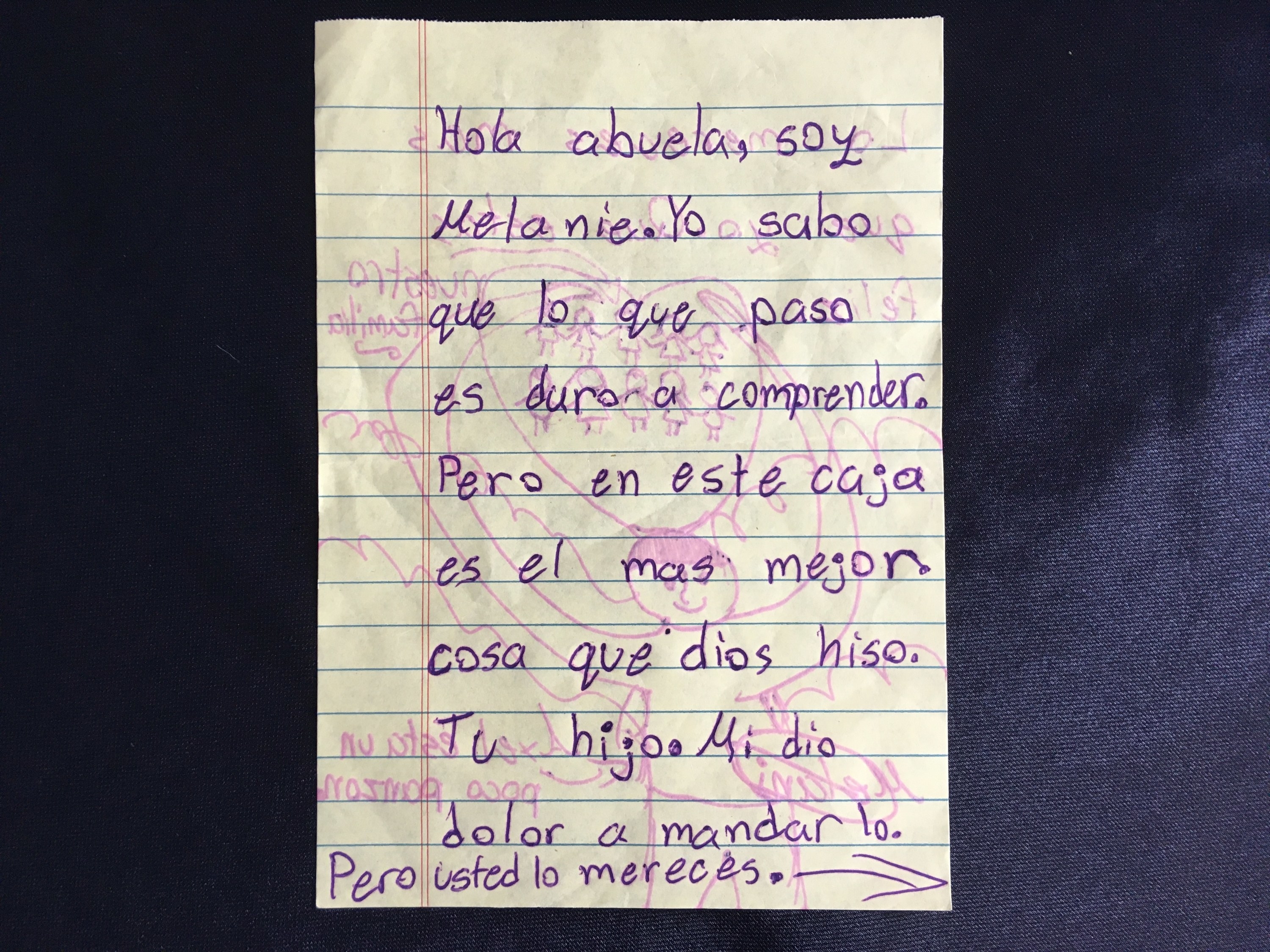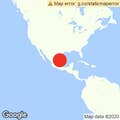
ATENCINGO, Mexico — In this dusty, small town in central Mexico, anything from rent to electric bills, flower arrangements at weddings, and the gravestones in the cemetery might well be paid for with money sent from the US. Evenings are spent WhatsApping with loved ones, 2,600 miles north.
For decades, families here thought that nothing could get between that flow of dollars and the cherished conversation with loved ones — a direct line between the US and Atencingo, home to around 11,000 people.
But earlier this year, the coronavirus jumped from China to Europe, and then to the US. Even before it had really spread to Mexico, the death toll in the tri-state area started to be felt here. One, then two, then eight immigrants from Chietla, the municipality where Atencingo is located, died from COVID-19 during the first few weeks of the pandemic.
Axel Mantilla was one of them.
Last month, his mother, Ana Maria Jiménez, sat in the living room of her rented, one-story house, ticking off on her fingers the names of neighbors whose remains had been shipped back to Mexico.
“There’s my son,” said Jiménez, staring at the small shrine she had set up on the dining table with his photograph, and the urn holding his ashes. A white ribbon hung by the front door.
Also, “Don Juan, the brother of my comadre, Doña Elvira’s son…” she trailed off. There were more, said Jiménez, but she had become distracted when she realized the string of lights adorning the shrine was unplugged.
Across the US, at least 2,270 Mexican immigrants have died from COVID-19. Of these, 771 lived in the tri-state area, and the majority of them originally came from the state of Puebla, according to the Foreign Ministry. Many of those who died had continued working in restaurant kitchens and on construction sites during the initial surge of coronavirus infections, becoming some of the first casualties of the pandemic in the US.
They have left behind mourning relatives on both sides of the border and financial hardship for their loved ones. While remittances, or the money migrants send back to their home country, rose by 10.6% in Mexico between January and June this year as compared to the same period in 2019 — defying economists’ expectations that they would plummet — for many of the families of those who perished from COVID-19 in the US, their main source of income suddenly disappeared. With a floundering economy in Mexico, these relatives now face the possibility of hunger and eviction.
Mantilla had left Atencingo, a small town whose economy revolves around the local sugar mill, with great aspirations 13 years ago: to start a new life and to earn enough to support his mother. Since then, Jiménez, 61, had come to depend on him for nearly everything.
The possibility of reuniting with his mother one day allowed Mantilla to keep working long shifts far from home. Instead, he died alone on April 15 in a hospital in Brooklyn, a month after contracting COVID-19. Jiménez, who continued sending him text messages even after he was sedated, received his ashes in mid-July, the day after Mantilla would have turned 35.
“He never returned on his own two feet,” said Jiménez. “He came back to me as dust.”

By 2007, Mantilla’s sister Nancy had been living in North Carolina for a few years. One evening, she picked up the phone to call him, saying she had enlisted a smuggler to take him to the US so he could join her there.
Mantilla, 21 at the time, was hesitant, his mother remembered. He had just gotten a license to drive trucks for Coppel, a department store, delivering furniture. But in the US, he could make far more money — and more importantly, send some back home to Jiménez, who had left her husband, whom she described as abusive and addicted to alcohol, and fled across the state.
For decades, that kind of call has been a rite of passage across Mexican towns, where many children dream of becoming migrants. A relative, once settled in, summons siblings and younger relatives, offers them a place to crash, and helps them find their first job.
Mantilla decided to go. He hugged his mother and set off with the smuggler, traveling up the length of Mexico and then walking across the desert for miles as he dodged immigration agents. When he finally arrived in North Carolina, his feet were blistered and his body was sore. He called Jiménez to tell her he had made it.
Almost immediately, Mantilla got a job at a Kentucky Fried Chicken and began wiring his mother a chunk of his paycheck every week. Jiménez would take a bus to a local bank, get in line, and wait with dozens of others who, like her, had come to retrieve money sent from New York or elsewhere in the US.
Last year, remittances made up 3.1% of Mexico’s gross domestic product, according to the World Bank. In some states, like Michoacan and Guerrero, remittances account for more than 10% of GDP. In Puebla, where Atencingo is located, it is 4.32%, according to the Center for Latin American Monetary Studies. During the first half of this year, remittances have surged, in part because the Mexican peso tumbled against the US dollar, and because many Mexican immigrants have become citizens and are eligible for unemployment benefits.
Looking around her house, Jiménez pointed at the things she had bought with the money Mantilla sent her from abroad: the stereo, the washing machine, the oven, and the furniture — though sparse — in the living room. Oh, and the wardrobe in the bedroom, and the bright blue paint that Jiménez bought to cover the cracks left behind by an earthquake in 2017, too.
Without Mantilla’s help, Jiménez doesn’t know how she could have survived the last decade. Her other children, two of whom live in the US, have sent her money intermittently, but it was Mantilla who helped her the most.
After a few years living in North Carolina, Mantilla and his sister heard that wages were higher in New York. They packed their belongings and moved north. Instantly, Mantilla felt at home. When he wasn’t working as a bartender or a restaurant server, he went ice-skating or strolled around Times Square. He had no desire to return to Mexico, but instead wanted to fly his mother to New York.

And so Jiménez traveled twice to the US Consulate in Mexico City to apply for a visa. It was rejected both times.
As the virus began to wreak havoc on New York earlier this year, Mantilla continued going in to work at a Colombian restaurant in Park Slope, Brooklyn. In early March, he came down with what he thought was a cold and went to a clinic. They told him to isolate at home. When his breathing became labored, he took a taxi to the nearby NYU Langone Hospital.
Speaking over the phone from her apartment in Brooklyn, Nancy said Mantilla asked his siblings to take care of their mother, as he lay in his hospital bed alone. For years, he had been sending her around $100 every week to cover her food and electricity bills. He worried about how she’d make ends meet if he was no longer around.
“I tested positive for pneumonia,” Mantilla wrote Jiménez on WhatsApp on the 14th. He later tested positive for COVID-19, said Jiménez.
The next day, Jiménez texted to ask if he had had breakfast. A short answer. The six messages Jiménez wrote to him on the 16th, mostly prayers and psalms, went unanswered. By the 18th, Mantilla had been intubated.
Twenty-eight days later, Mantilla was dead.
Several weeks after Mantilla died, Nancy gave his remains a New York send-off. Cradling the wooden urn with his ashes in her arms, she took the D line for Mantilla’s final subway ride from her home in Brooklyn, across the Hudson River and into Manhattan. She got off at 42nd Street, did a loop around Bryant Park, and then strolled up Seventh Avenue to Times Square. As she walked around, Nancy whispered anecdotes from a shared childhood and memories from recent years.
“He was happy to be in his Manhattan” before going back to his childhood home, said Nancy, 41.
Finally, she walked across town to the Mexican Consulate. There, Mantilla’s ashes joined those of nearly 250 other Mexican immigrants whose remains were about to be repatriated to Mexico.
On July 11, the Mexican Consulate organized a prayer service at St. Patrick’s Cathedral for those who had died as the virus swept over the city like a tsunami. A mariachi band played to a socially distanced crowd of relatives paying their respects and saying farewell to their loved ones. Cardinal Timothy Dolan blessed the urns before a Mexican Air Force plane took them home in what the Foreign Ministry called “an unprecedented” effort.
After the urns arrived in Mexico City, they were sent to more than a dozen states across the country, and then on to dozens of towns. Those that went to Puebla had a black cloth draped around them. “You’re home now, Poblano migrant, rest in peace on the earth that witnessed your birth,” read a message on each.
Along with the urn, Jiménez received two handwritten notes: one from Nancy and another from Melanie, her 11-year-old granddaughter, who was close to her uncle. “I know this is hard to understand,” wrote Melanie in a message to Jiménez, “but the bestest thing God did is in this box: your son.”

Jiménez, who has adorned the bright blue walls of her living room with images of Jesus Christ, the Virgin Mary, a nativity scene, and four ceramic angels, couldn’t hold a mass for Mantilla. Still, she feels a sense of relief now that she has her son’s ashes at home. Every day, she sets out a plate of his favorite fruit next to them.
But it is lonely to grieve at home, with Nancy so far away, and her church still closed because of the pandemic. Recently, she went to give her condolences to the mother of Don Juan, another migrant who died of COVID-19. After all, she said, “we lost the same thing.”
Jiménez said her other children have been sending her a little money here and there, but they too are struggling to find work. Jiménez, who has diabetes, isn’t sure how she’ll pay her monthly rent of $60. Or her electricity bill. Or buy food.
She can’t go out and sell jellos, like she used to before the pandemic, because she’s afraid of getting sick. But Jiménez said she’ll find a way, “as long as I can buy a few beans for lunch.” ●

